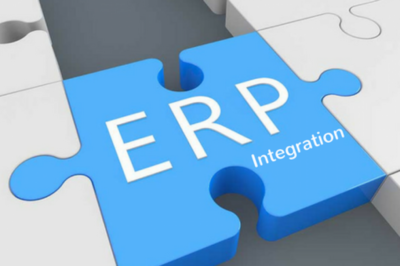
ERP integration is the process of connecting an Enterprise Resource Planning (ERP) system with other software applications, databases, and systems within an organization. The goal of integration is to enable seamless data flow and real-time information sharing between different parts of the organization, improving overall efficiency, accuracy, and decision-making. Here’s an overview of the ERP integration process:
- Requirements Analysis:
Identify the specific systems, applications, and data sources that need to be integrated with the ERP system. Determine the integration objectives, such as synchronizing customer data, inventory levels, order information, financial data, and more. - Integration Strategy Selection:
Choose the appropriate integration strategy based on your organization’s needs and existing technology landscape. Common integration strategies include point-to-point integration, middleware-based integration, and using APIs (Application Programming Interfaces). - Integration Method:
Depending on the chosen strategy, decide on the integration method. This might involve custom code development, using pre-built connectors, or utilizing third-party integration platforms. - Data Mapping and Transformation:
Define how data will be mapped and transformed between the ERP system and other systems. Ensure that data formats, structures, and semantics align to prevent inconsistencies and errors. - API Development (if applicable):
If using APIs, develop and expose APIs in both the ERP system and the systems you’re integrating with. APIs act as gateways for data communication and interaction. - Custom Code Development (if applicable):
If custom code is needed, develop the necessary scripts or code to facilitate data exchange. This might involve using languages like Python, Java, or .NET. - Middleware Setup (if applicable):
If using middleware platforms, set up the middleware environment, configure connectors, and define data transformation rules. - Testing:
Thoroughly test the integration solution in a controlled environment. Verify data accuracy, error handling, and system performance. This testing phase is crucial to identify and address any issues before moving to production. - Data Migration (if applicable):
If historical data needs to be migrated from legacy systems to the ERP system, plan and execute a data migration process. This ensures that historical data is available in the new system. - User Acceptance Testing (UAT):
Involve end-users in UAT to ensure that the integration solution meets their needs and expectations. Address any feedback or concerns that arise during this phase. - Deployment to Production:
After successful testing and validation, deploy the integration solution to the production environment. Monitor the initial rollout for any unexpected issues. - Monitoring and Maintenance:
Continuously monitor the integrated systems to ensure data consistency and integrity. Perform regular maintenance and updates to accommodate changes in business processes or system upgrades. - Security and Compliance:
Implement security measures to protect data during integration, including data encryption, access controls, and compliance with relevant regulations. - Documentation:
Document the integration process, including integration strategies, data mapping, APIs used, custom code, and any troubleshooting procedures. This documentation is valuable for future reference and maintenance.
ERP integration is a complex process that requires careful planning, technical expertise, and collaboration between various teams. It plays a vital role in creating a unified technology ecosystem that enhances overall organizational efficiency and agility.
Regards
Antony – ERP Solution Consultant